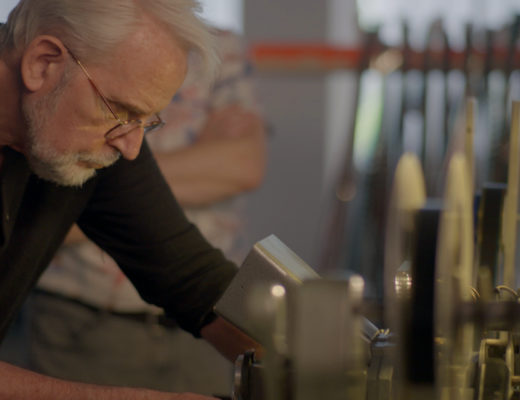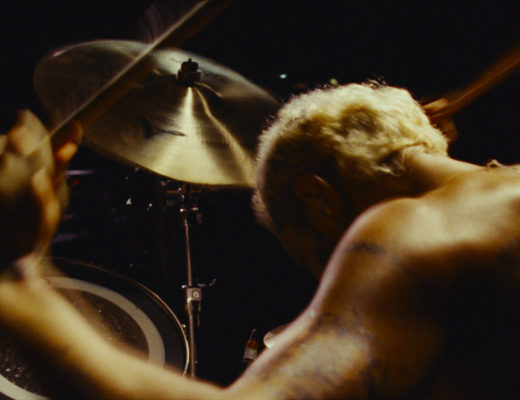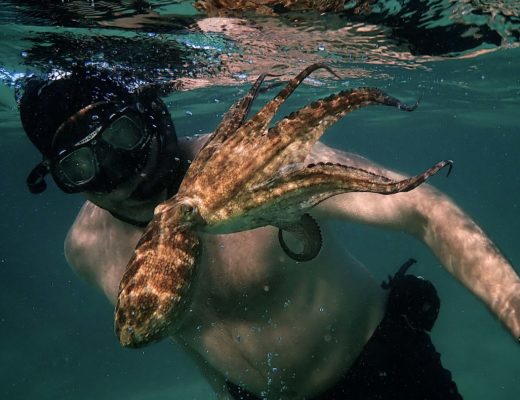Spider-Man: Far From Home was edited by veteran MCU (Marvel Comics Universe) editor, Dan Lebental, ACE, and another experienced big-budget editor, Leigh Folsom Boyd. Lebental’s credits include Dead Presidents, Elf, Iron Man (I and II), Cowboys and Aliens and many MCU films. Leigh Folsom Boyd’s filmography includes Fast and Furious (6 and 7), Ant-Man, and Pirates of the Caribbean: Dead Men Tell No Tales.
Art of the Cut previously spoke to Folson-Boyd about her work on Pirates of the Caribbean: Dead Men Tell No Tales in this interview.
(This interview was transcribed with SpeedScriber. Thanks to Martin Baker at Digital Heaven)
This interview is also available as a podcast.
HULLFISH: With movies like this, there’s got to be a balance between the character development stuff — the stuff that provides the “why” — and the action, superhero stuff. Was that something that you needed to balance in post?
LEBENTAL: I think it evolved, right?
FOLSOM-BOYD: Right.
LEBENTAL: They had a lot of good stuff in place, and the first movie had established an awful lot about him, but as we went along, things did keep evolving.
HULLFISH: Some of the VFX are so elaborate that I was trying to figure out — in the early stages before the effects were delivered — what were you using to get a feel for those shots? Were you using previs?
LEBENTAL: It went through this whole stage of giving us previs. Our first goal with the assembly is to just be able to tell a story, so they gave us enough previs and then that turns into postvis, which is they start to shoot backgrounds and we put that stuff in. But then at a certain point, all bets are off and we start rewriting the whole movie anyway, and Leigh certainly did an awful lot of that.
FOLSOM-BOYD: We were using slugged cards at some points, and then we’d get postvis for the new beats.
LEBENTAL: You sometimes have to start the conversation by requesting something whether it was planned or not, just to get everyone thinking. We’re gonna have to do something here, so we may interact with the postvis people or previs even sometimes and say, “Can you do this for us?” And then we’ll put it in and once the director and the other powers-that-be come in then they’ll put in their two cents, but we have to get it started.
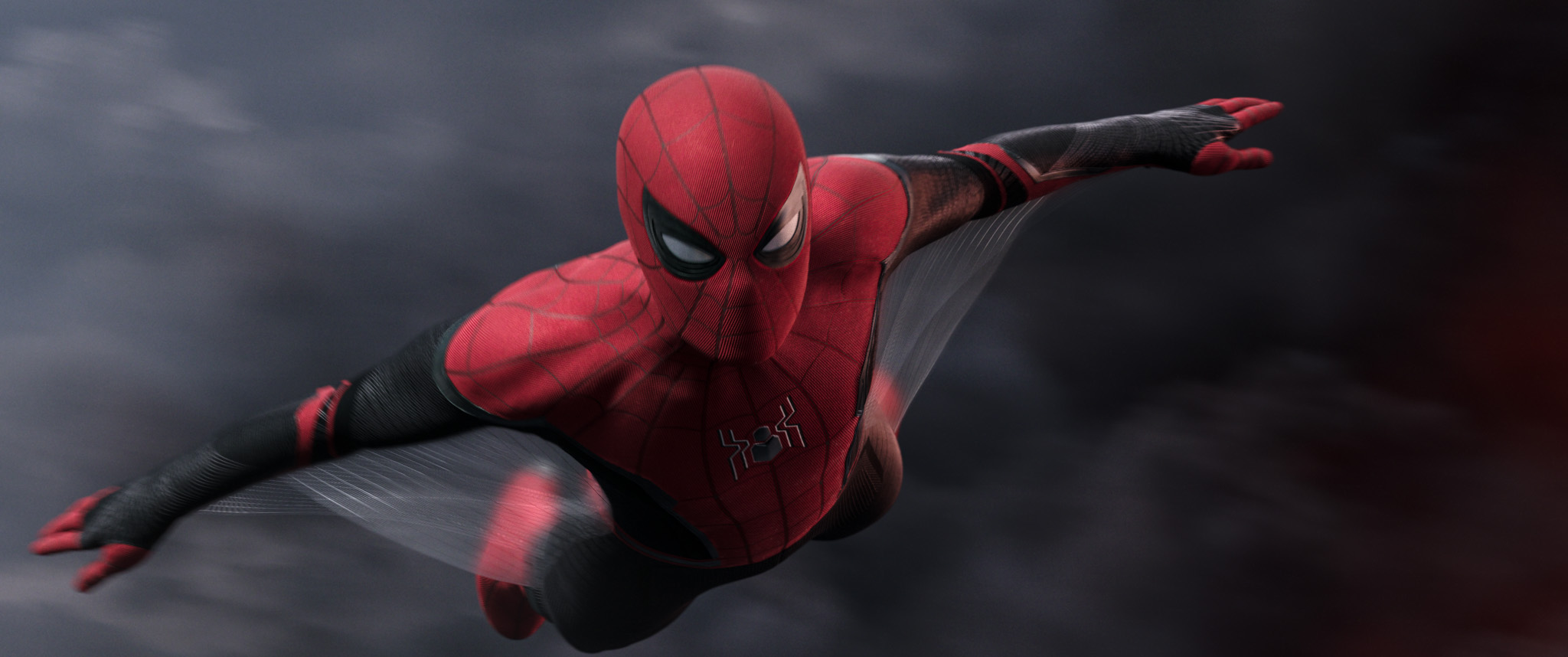
HULLFISH: You mentioned that things changed fairly significantly. Is there a specific example that you could cite of some of those things that did change?
LEBENTAL: The action scenes definitely evolve the most. Leigh had the task of the gigantic end battle. How it evolved was night and day from what it originally was. On my side was the illusion battle which we started off as one thing — and we have high ambitions, the original plan everyone felt was underwhelming, so then the Eye of Sauron goes onto that and then we put all our effort into that and then it moves to the next thing.
HULLFISH: What was the breakdown of stuff coming in during dailies and who took what
LEBENTAL: Leigh tried to take everything. (everyone laughs) She’s more than game for everything. I’m a story guy, so I have an interest in character and tone, so in our negotiation for who would do what, it made me very happy to give her the biggest, hardest tasks. In my world, I like to find the tone — find the story beats and the character stuff and try to get that stuff a little off the table because I figure If we get that early it means a lot to what the rest of the process is going to be. So therefor Leigh took two of the three biggest action scenes in the movie with joy and love and did it. And we help each other. She comes and comments on whatever I do and I come in and comment on hers. Between us there’s an enormous skill set — an enormous amount of experience to be able to tackle the different problems as they come.
FOLSOM-BOYD: And we just had a lot of fun approaching the work. I love the collaboration with Dan and — like he said — we were just able to hammer it out and get it done.
HULLFISH: You two have both worked on some big movies and I am really interested in the thought process of trying to manage those or understand what it means to work on a movie of that size and scope.
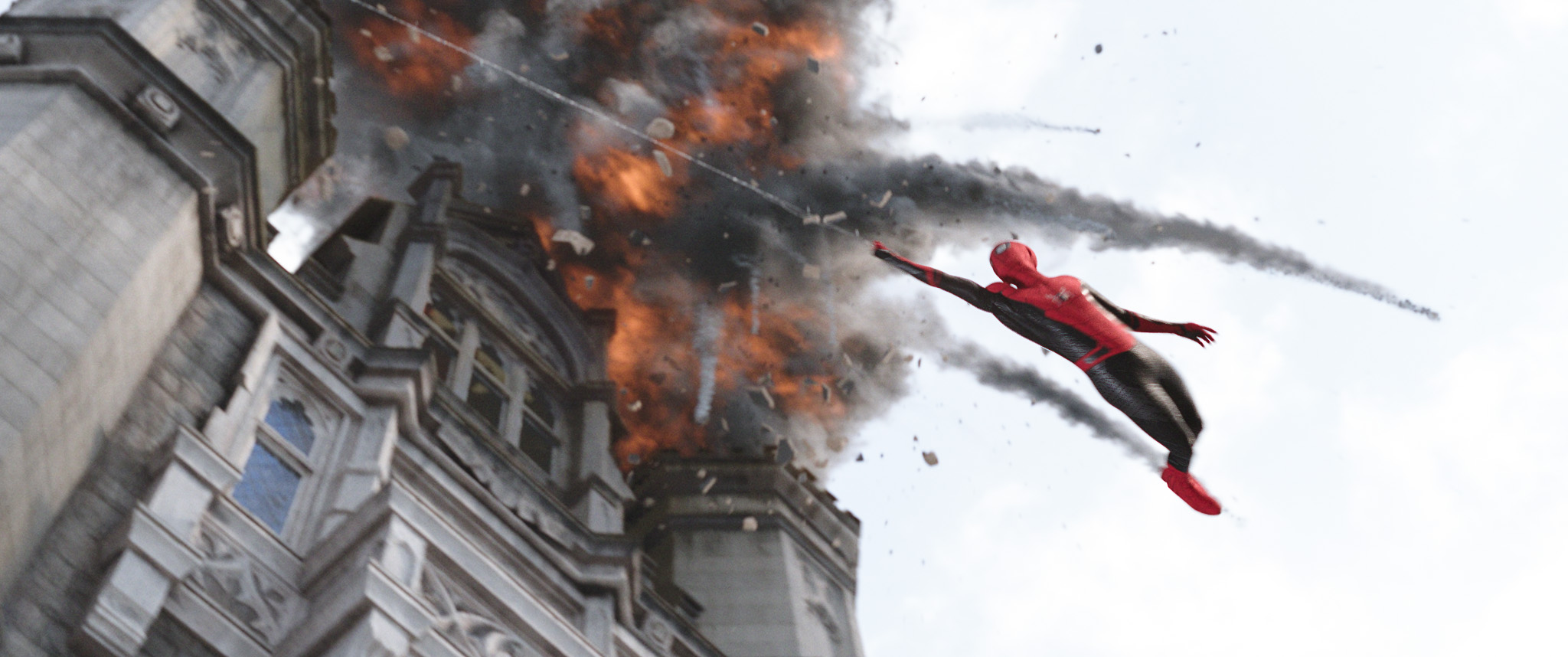
LEBENTAL: Experience is a great thing. Leigh already was a very veteran person on big pictures and we have FX pictures. So she’s no stranger to any of that. I’m a Marvel veteran — in fact, the original Marvel veteran because I did the first Iron Man. I have the knowledge of what’s going to be expected and how it’s gonna go down. There’s a lot of having faith in the process — don’t worry about it now, we’ll get there. We don’t have a lot of pieces until late because of effects or additional photography that makes things work, but we’re editors, so we have to try to make do with what we have. You can’t just say, “Well that’ll\\ be better later.”
You have to hammer out version after version even if you know that this isn’t going to be what it ultimately is. Also, sometimes they need work-in-progress for other shoots. Like, Leigh did this amazing bus sequence (where Peter first tries on the EDITH glasses) and they had shot the interiors before the exteriors. The script had some dialogue and ideas but it really wasn’t the shape of what Leigh developed it to be. In order to do that, there’s this chicken and egg thing where you have to present something so that then they can react off of it. It’s part of our mission. It can be thankless too because they’ll respond to it by saying, “Well that’s wrong.” And we have to say, “Yeah, yeah. Let’s now make it right by getting the stuff we need.” So that’s a prime example of a sequence that evolved into one of my favorites.
HULLFISH: Leigh, speak to that a little bit about how it evolved and what the process was of trying to cut a sequence where you don’t have the footage that you need. What was carrying you through being able to get through that process?
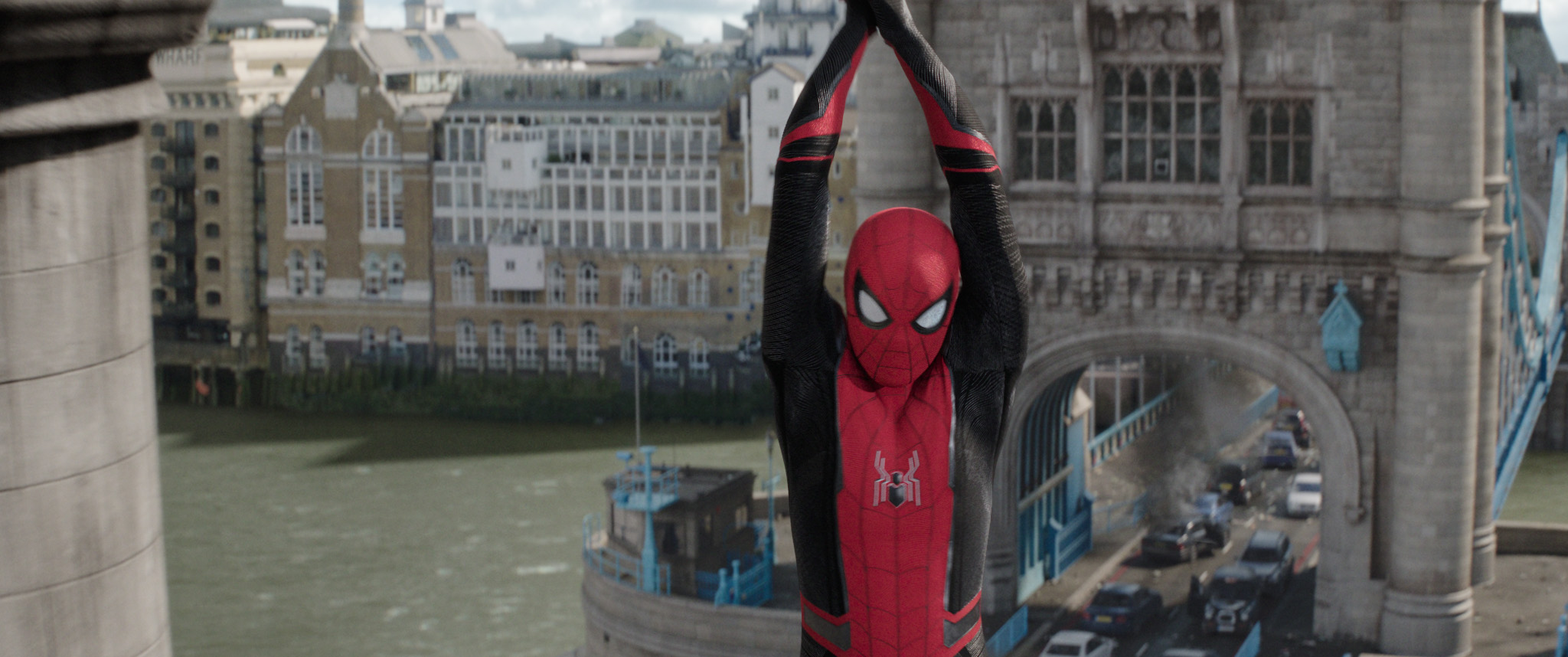
FOLSOM-BOYD: While it’s evolving you go through a lot of ideas. For instance, with the bus sequence, I’d go into Dan’s room to talk through it because there were a couple of things in the script that I couldn’t see happening, and Dan would listen and then offer some MCU perspective, then I’d go back to my room and try to create something. Peter Parker is putting on the glasses and he’s introduced to EDITH. And so in the MCU world (Marvel Comics Universe), the audience knows that any of the Stark Technology is pretty spot on. It works. So to have a scene where that technology is not functioning properly required the scene to evolve so that it made sense in that world. That evolved right up until the additional photography shoot. Jon Watts, our director said, “We need a gag here, like the glasses falling off of Peter’s face.” It has to be something that makes sense and that’s not gonna dumb-down the sequence, but it has to be fun, so that was something that kept evolving.
LEBENTAL: To add to that, when we do these scenes they’re not shot in order. They’re in isolation. At first, they’re their own movie. The fact is that that scene established the rules of what EDITH would be. You can’t have a six billion dollar piece of tech that’s stupid. You have to say, “Whatever rules you’re going to put here now are going to apply to the third act.” So in backing it in to be just right for that sequence it meant actually looking at the strings that went all the way to the final sequence to make it all cohesive and to make it make sense. We had a lot of that. We had good sequences that had their own rules for that sequence, but then when you put it against the whole movie, then you’d run into a problem, like, “Wait a minute! I thought that Edith couldn’t do this or could do this.” So you get to a point where you’ve got to find a new way to solve the earlier scene. So Leigh had to solve it about four or five times.
FOLSOM-BOYD: At one point, I’d just go knock on his door and he’d look up as if to say, “What now?” Dan is a great collaborator, and ultimately it all worked out. As editors, if we have questions, the audience will too, so it’s good to talk it out.
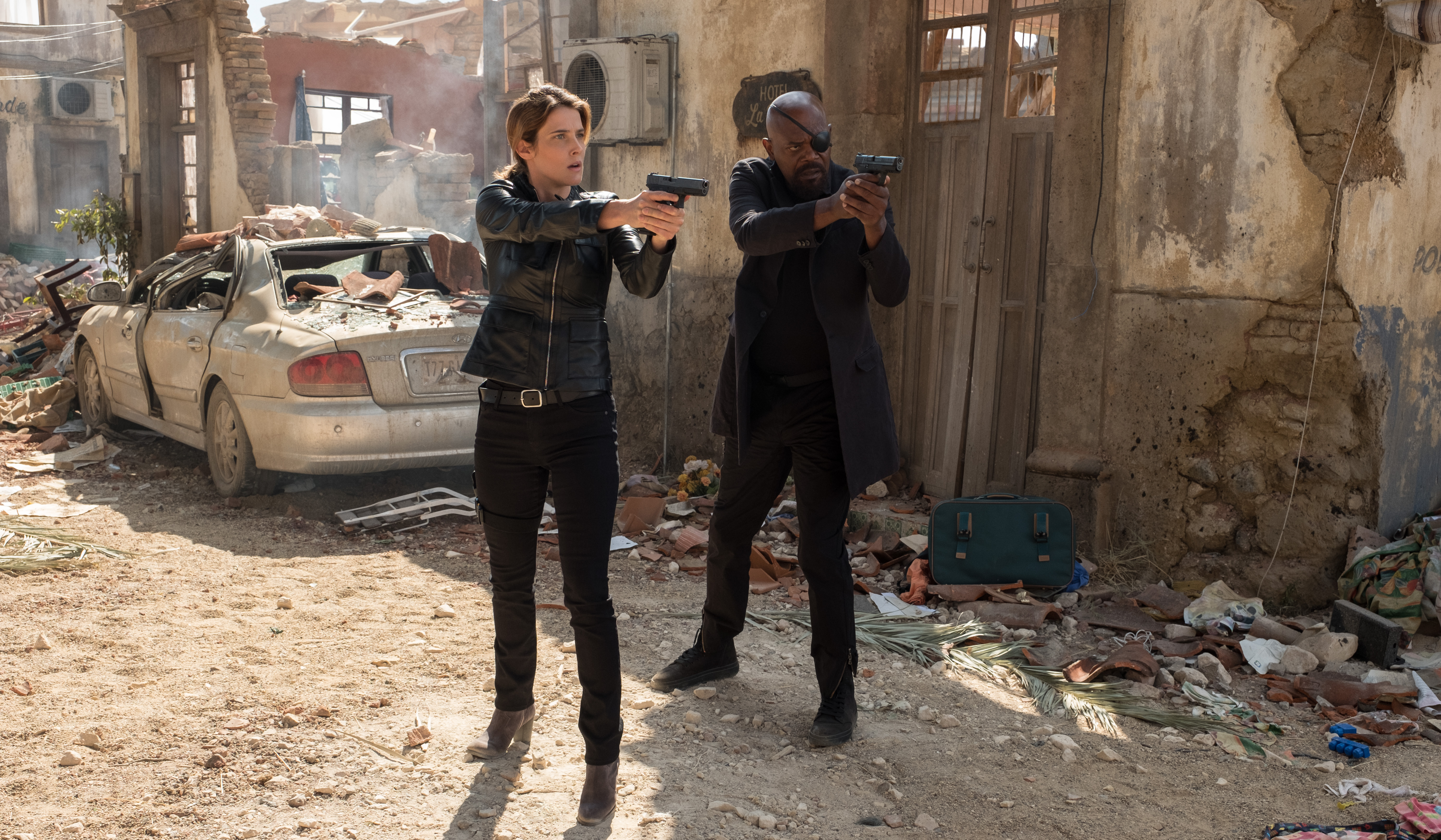
LEBENTAL: To your earlier question about the process, it’s like that quote in Shakespeare: “Love. It’s a mystery.” There’s kind of faith in the process you have to have. Especially on these gigantic films that are just complete organized chaos. There’s no one person in the whole film that actually knows what’s going on everywhere. Ultimately you get in the room and get everyone on the same page, but while it’s going you have to just take a deep breath and have faith. So as Leigh’s therapist that’s that was my job: “Don’t worry! This battle isn’t over.”
HULLFISH: I thought you guys were both supposed to be the therapist for the director.
LEBENTAL: That’s later.
HULLFISH: You were talking about these discussions and the process. But these discussions are not happening just between the two of you. These are happening with Kevin Feige, and they’re happening with the director. Tell me a little bit about managing those relationships and how you two were collaborating with the rest of the team.
LEBENTAL: Mostly they’re trying to get to the big points of the story, but they’re also trying to develop the action sequences. They have a whole department at Marvel called Look Dev. So a lot of the imagination that makes them greenlight a movie is based on actual still images that these amazing artists make. So they say, that’s great. That was a famous moment in the comics. Now let’s evolve this into a story. We’re actually coming in later in the game. I came in a little bit earlier since I had a relationship with John Watts and that team. They brought me in to pitch the whole story very early.
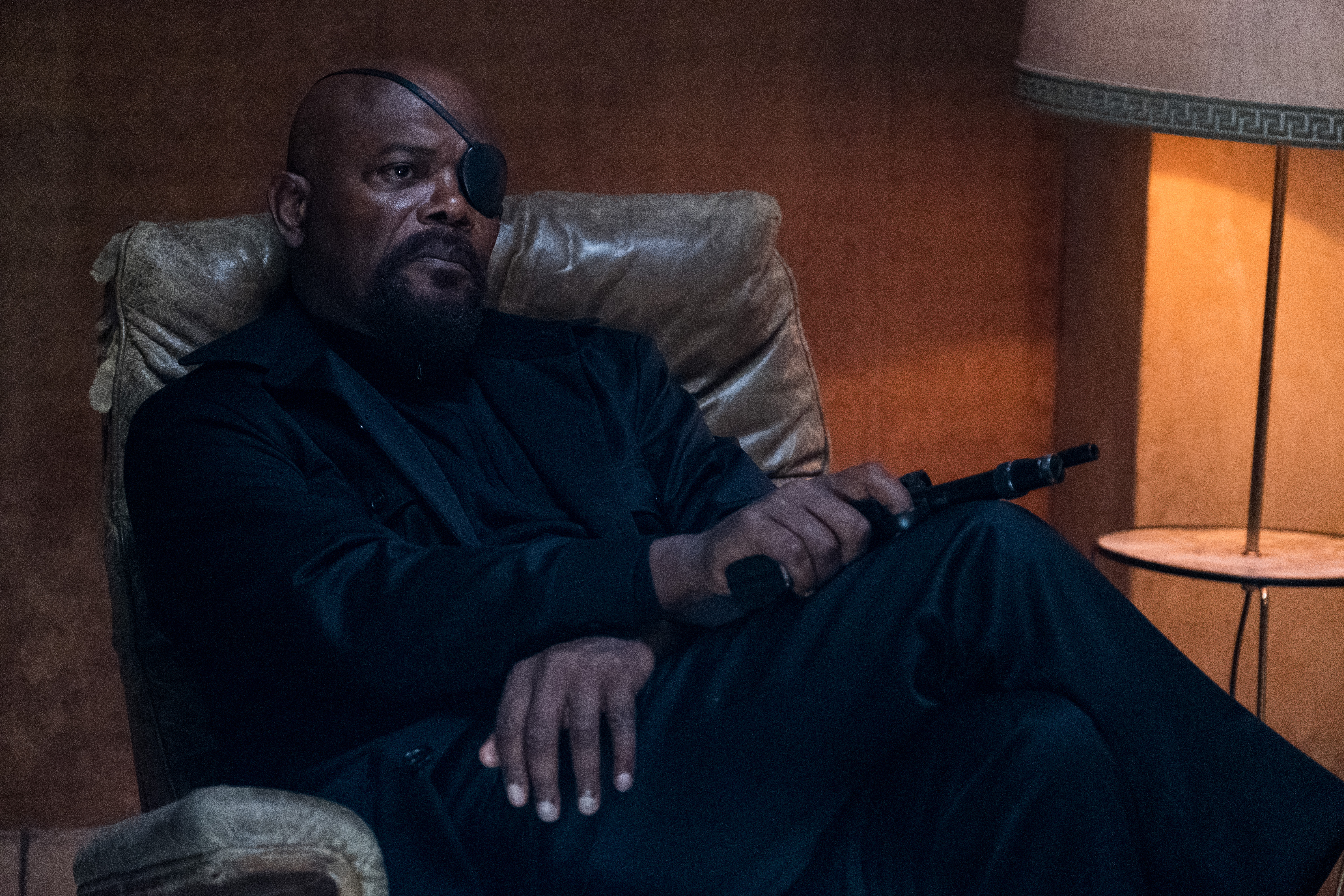
But when we arrive, it’s kind of like landing on a moving bus. There’s no time for anyone to necessarily explain anything to us. We just had to kind of jump on and get our own sea legs and start down the path and up until directors cut there aren’t really that many eyes on us. There are only eyes on things that they’re worried about. The rest is us just saying, “OK what kind of movie can we make with what they’re shooting.” So that’s what we did and we had lot of fun because Leigh and I could talk about problems and she could educate me with her amazing organization, next to my messy organization, and I’d give her a few pointers on Marveldom and comedy and things like that.
HULLFISH: Leigh, you mentioned: “This scene isn’t quite working” or there’s some problem that you’re having. How are you relaying those concerns upward in the chain — not necessarily to Dan, because I’m sure that the things you would tell Dan you would not necessarily tell to the director or to Kevin Feige.
FOLSOM-BOYD: Right. The last thing you want to do is go off and panic everyone that something’s not working and do a sky-is-falling moment. You only want to raise that flag when you really have an issue. So there were a couple of times when we would go to set and I would bend Jon’s ear and say, “For this moment what did you kind of envision happening?” And he would say, “Well, I thought that this would happen like this.” And then he’d ask, “Is that not working?” And I would say, “I’m gonna go back and take a look with that in mind and I will get back to you.” Sometimes it didn’t work, but I’d try something else because in talking with him I would come up with another approach or he would have insight and I would combine that with what I was doing and see if that would work better. So as far as relaying any concerns upward, we were lucky because we really didn’t have a scene that was not going to work. As Dan said, Have faith in the process and usually the problems worked out or it was something that — when we got deep into post — everyone thought, “it works but we can make it better.” And they’d add it to the additional photography shoot and “plus” it. So problems were mitigated in that way as well.
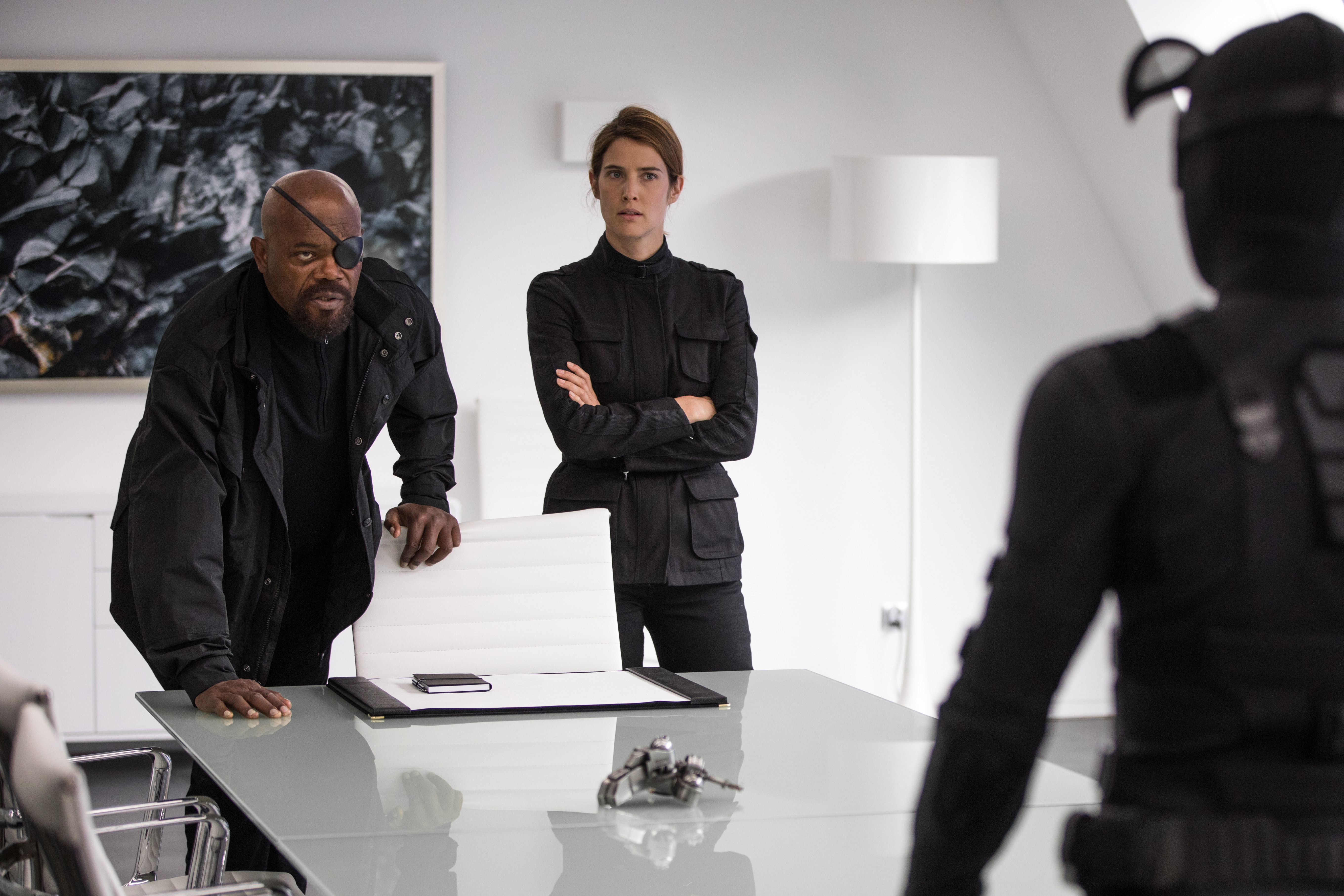
LEBENTAL: My philosophy these days — it’s really evolved over the years — is that we have way more movie than we’re ever going to use in this thing. We have a lot of movie that is on the cutting room floor, so I’m really loathed to go and present problems. I also know that there’s politics going on that we have to be careful about. The director’s biggest task during the shoot is to make his day. He’s trying to make his day. So if we go to him and say, “We’re missing this and this,” it means that he has to take off something else and he may not make his day. They have their own politics they’re juggling about what they consider a completed scene, so we may think they haven’t gotten any inserts, but they actually get them later even though they mark the scene as complete.
So you just have to take a breath and if there’s really a problem we’d speak up, but for me, the real problems actually never involved coverage because I always figure that we either have a way around it or the director already knows it and he’s going to get it later. For me, the real problems are around if I’m seeing a character problem. What I prefer to bring up is what IS working. If you look at this and this is working, why don’t you try to tone everything here? And so I’ll talk about that stuff and this director is as smart as a whip and it doesn’t take a lot. You don’t even have to finish a sentence and he’ll already have it. I try not to be somebody who rocks the boat. That’s from a lot of experience, knowing that you can do more damage than good.
HULLFISH: But that’s part of having the editor cutting while they’re shooting is to be able to raise those alarms. But I agree that you don’t want to be the whiner that is always asking for stuff that they don’t have or complaining about things that are wrong.
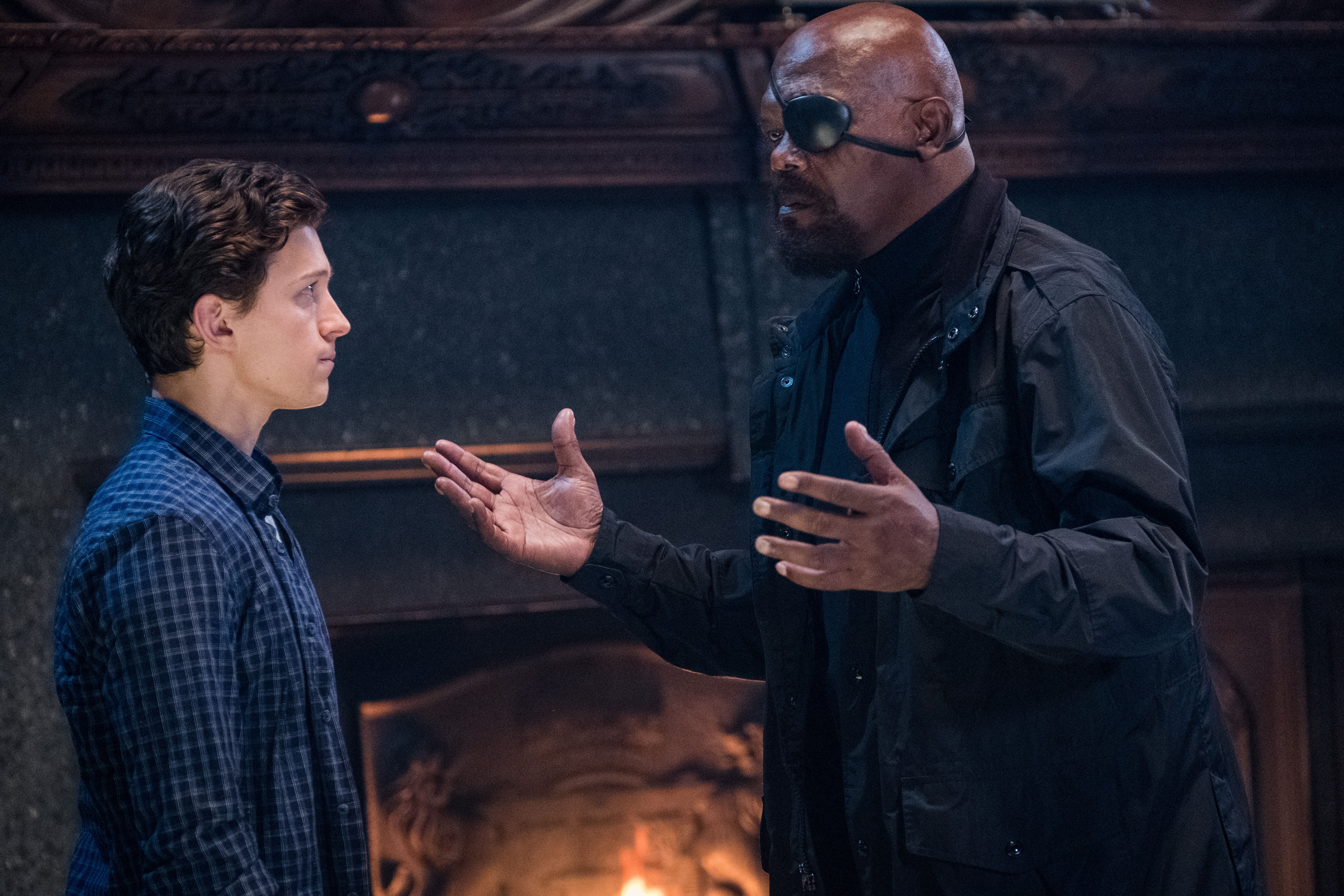
LEBENTAL: The real issues — the juicy ones — DO get talk. We would have meetings that would drift up to the editing room where we could talk about what the bad guy’s arc in the story’s going to be. What are we going to emphasize? Going into the shooting script, it wasn’t fleshed out yet. A lot of it did get fleshed out in the course of principal photography and that had to be done face-to-face. It wasn’t something we could do remotely. Leigh and I would talk about the issues incessantly. We’re talking about what everything is about while we’re going; what the implications are… We even knew about the implications of our tag at the end and we speculated about that an awful lot — if we were really going to be able to do it because it was such a corporate decision. So we’re talking amongst ourselves and then when it drifts into the producers and director then we’ll bring up these things, but to me, the individual scenes and coverages are not necessarily what I want to spend the very little time I have with them about. I’m going to talk about story.
FOLSOM-BOYD: Of course Dan and I are both very story-driven, but Dan is laser-focused on story. Like he was saying earlier, the movie is so big and at a certain point, it has to come down. So having that focus really helps to just say, “OK, this is a fun moment but it isn’t necessary. It’s not story-driven and we can lose it and it’s OK.”
HULLFISH: Plot-wise — and I didn’t write the movie or edit it — but the big concept for me was “Who’s the next Iron Man?” Is that idea — or some other simple thought — that you judged scenes against?
LEBENTAL: Well let me answer that question in a different way because that question is absolutely there built-in. What we face a lot though are scenes that are talking to two different things or more, where you do have to slim it down. This scene is about how Peter is dealing with the death of Tony. How is he going to overcome that? Who’s going to be the next Iron Man is just a manifestation of having lost his parental figure. Then the issue is that we can get scenes that are convoluted and have multiple talking points at the same time. And ultimately you have to choose a lane. So to answer the question, yeah, you want to sharpen it. In that moment it’s about Peter being confronted with who’s the next Iron Man, meaning, “How am I going to replace my father figure?” Generally, I like scenes to not have too many functions because they’ll sort of cancel each other out.
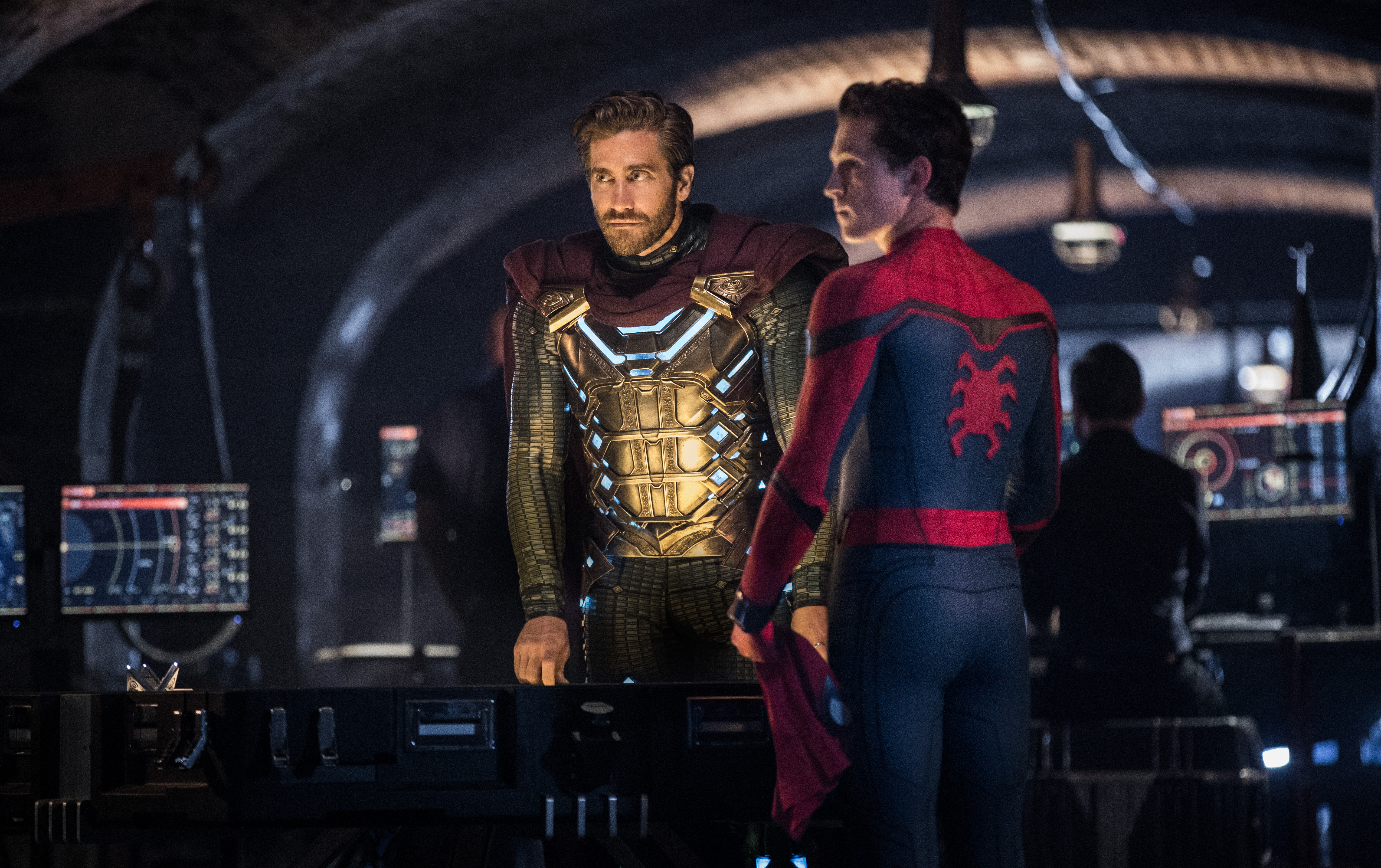
HULLFISH: I was thinking more along the lines of — Peter’s always trying to decide, “Am I worthy to accept this mantle? How is it going to affect me? How is it gonna affect my friends?”
FOLSOM-BOYD: Yes. It’s how it affected Peter. Leading up to the Illusion Battle he doesn’t feel worthy and he’s never gonna be able to measure up.
HULLFISH: Dan gave you a lovely compliment about your organizational skills. What do you think Dan has learned from you, Leigh? What’s the difference between your organizational styles. How are you organizing that he was impressed with the organizational skills?
FOLSOM-BOYD: It was a high compliment but I’m at a loss because I feel like we both had terrific support keeping us both in line in the cutting room with our assistants. I like to color the matte a certain color if I’ve made a change so I lean on that a lot.
LEBENTAL: What she’s not saying is how messy my bins are. And how disorganized I am, so finding things are like a needle in a haystack.
HULLFISH: Did you guys ever share bins? Were you only working on your scene and there wasn’t a lot of handoff?
FOLSOM-BOYD: We had some scenes that were handed off for sure, but you have the bin settings and I would just click to my bin setting so it didn’t mess up whatever Dan wanted to do for his bin setting.
LEBENTAL: The hardest part was that her room was set up in post-production to be the one that all the players would come into all day.
HULLFISH: Great power play, Leigh!
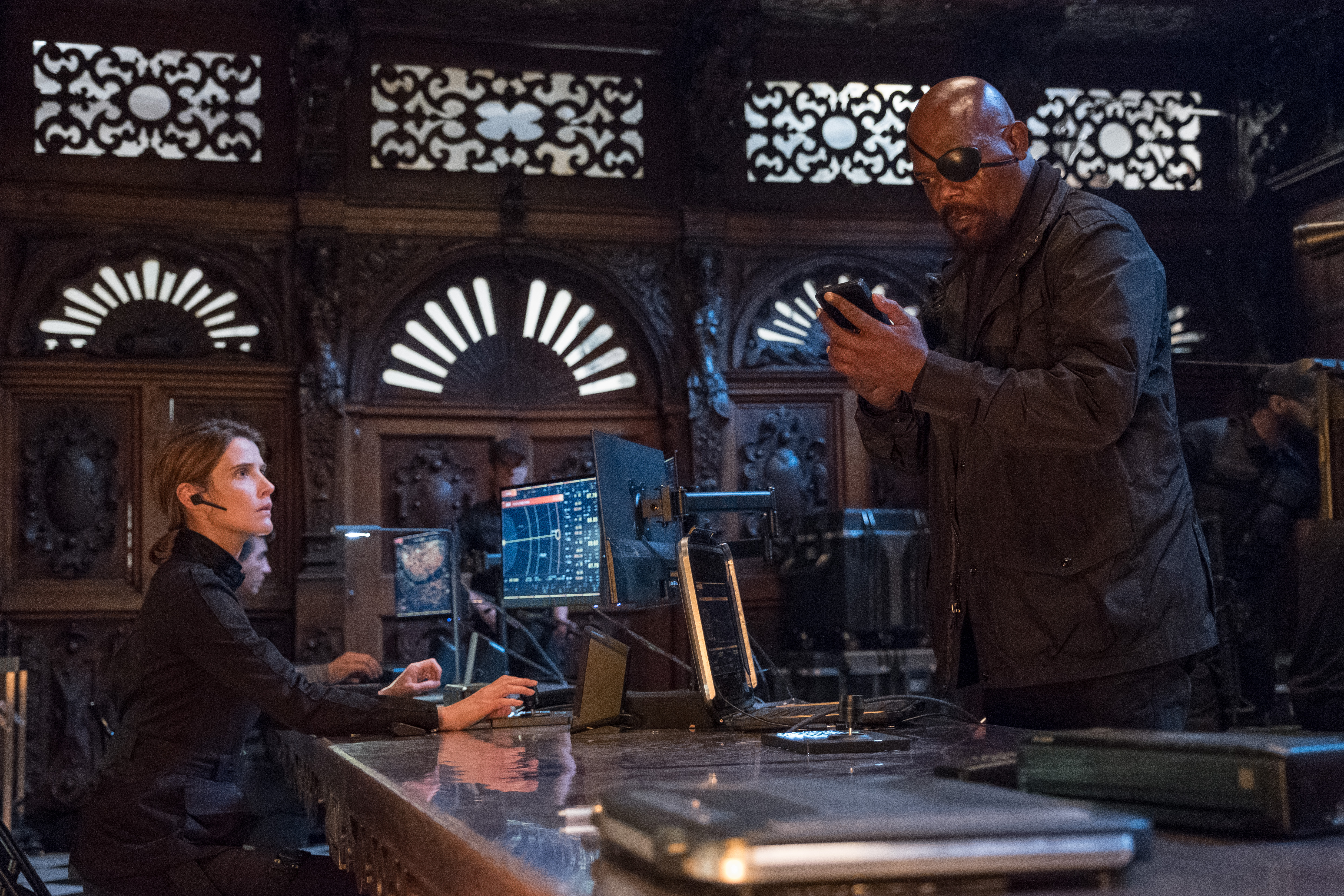
LEBENTAL: Leigh is a very statuesque lady. She’s tall and I’m short and stubby. She has a raised table with a high chair and I felt like a toddler climbing up and trying to work that way. We’d have each other settings on our machines so we could each work on the other’s machine.
HULLFISH: I’m interested in the fact that there was a specific room that was more set up to accommodate the director, the producers, whoever needed to come in and have a discussion.
LEBENTAL: Leigh’s friendlier than me.
FOLSOM-BOYD: Honestly, on the first Spider-Man Jon set up his desk and his office and everything in Dan’s room. We called it the dorm room on this one.
LEBENTAL: Yeah, my room was the dorm. Even though he had own huge office around the corner, he set up a desk and would hang out only in my room. I had to leave a sock on the door to let him know not to come in.
FOLSOM-BOYD: When Jon wasn’t with me, he was in Dan’s room.
LEBENTAL: But also the way her room was organized, when Kevin Feige and all those guys would sit in with us, hers was the more comfortable place, except for me having to crawl into the highchair.
HULLFISH: Did you guys come in to try to do previs editing before the movie?
LEBENTAL: Not on this one.
HULLFISH: Have you done it on previous ones?
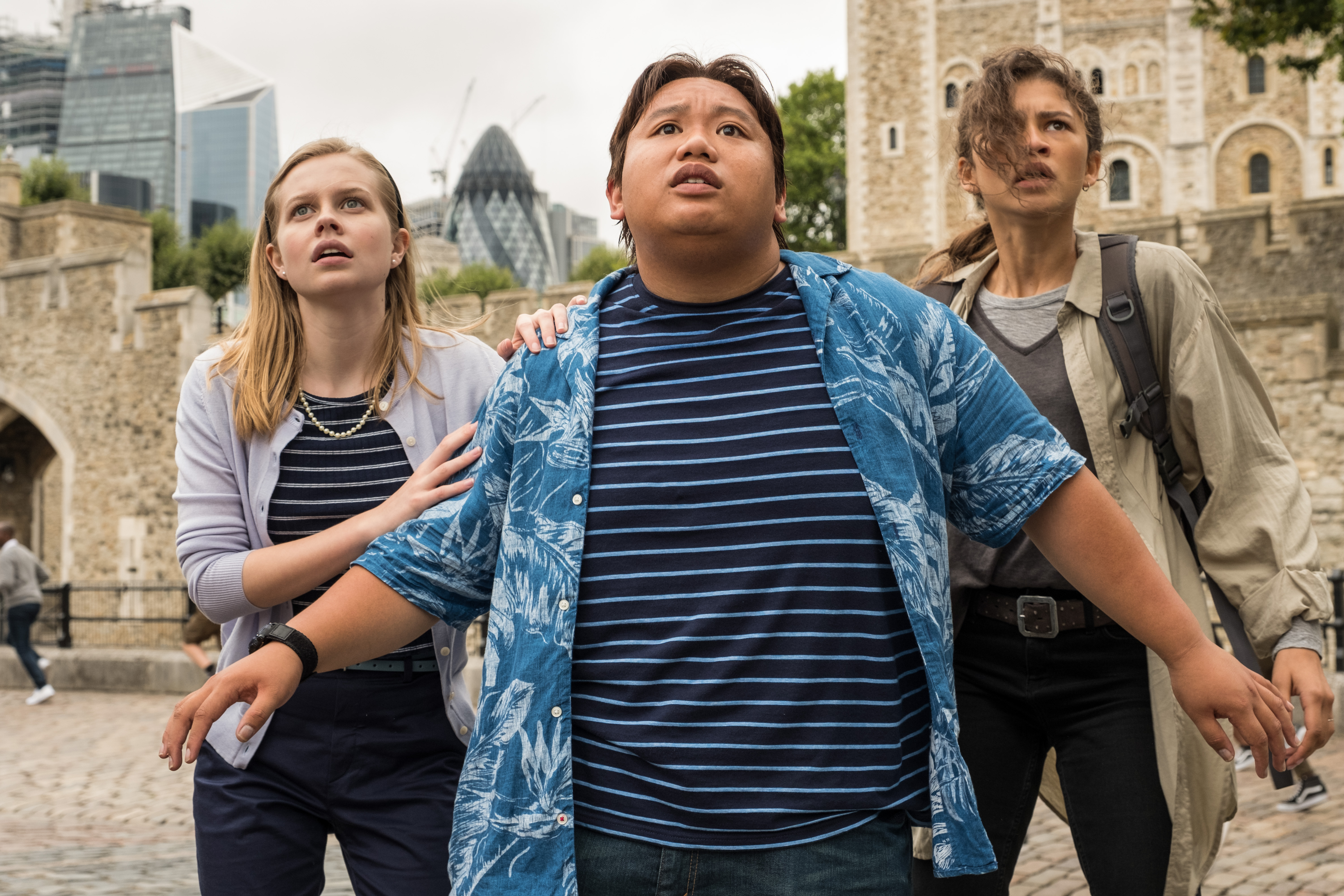
LEBENTAL: Yeah. I don’t particularly like to do it. I do it at the request of the director. I’m still a little old-school in that I think the editor’s job is to not have any skin in the game. To try to get the footage fresh and just evaluate and make our decisions based not on what the plan was, but on what’s going to work. So I always find — especially early on in the process when they’re involving individual moments — I find that that’s gonna make it a little bit more difficult to just see it for what it is. Later in the process, of course, we have to help plan very precisely what the reshoots or additional photography are going to be. But during the initial phases, I’m not a huge fan of it. If it helps the process, I’ll do it begrudgingly.
HULLFISH: Leigh, you were talking about trying to sell scenes or know whether they’re working or not. I always think sound effects — especially in a movie that’s got a lot of VFX or is somewhat fantastical — helps with that. Talk to me a little bit about building out sound effects to try to get a scene working when you don’t even have all the shots maybe.
FOLSOM-BOYD: I think sound effects and music are great and of course, help sell a scene. It helps with the everything, but there’s a natural rhythm that has to work before you have sound and music added to it regardless. So, I’ll play a sequence mute just to see if I have a rhythm right or if the natural flow of the scene seems to be playing right and then dress it up with music and sound. We all know that you can influence tone and pace if you have the right sound and music. Just to add a little more intensity to the scene you put a more intense or percussive music beat just to get it a little more action paced. I’m a big believer in dressing up the scene for presentation because I think it gives you the frame of mind. When I want to present a sequence I s present it as full as possible to the director. I want them to feel like they’ve made a movie, so dressing it up gives it a more polished feel.
HULLFISH: Dan any thoughts on that?
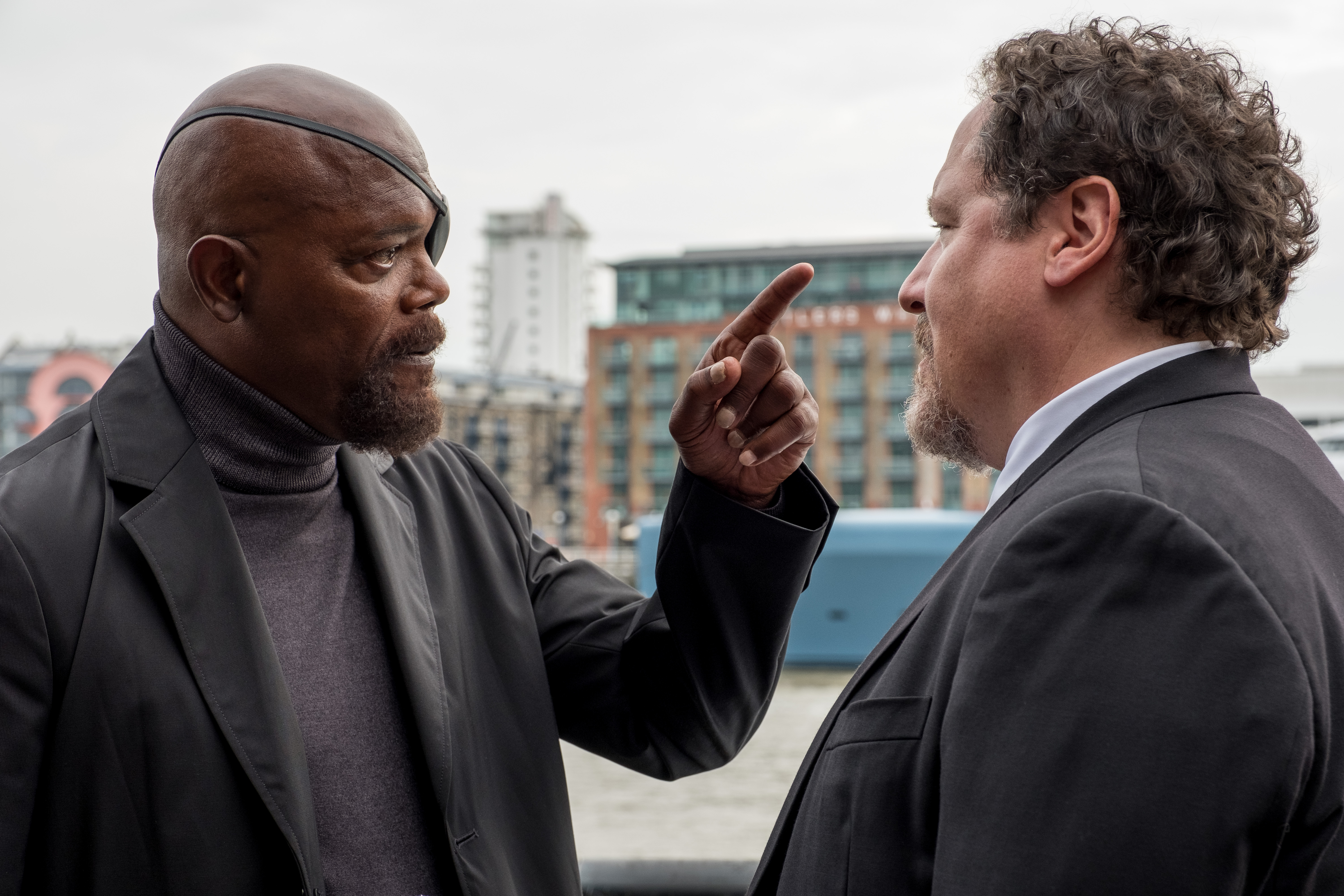
LEBENTAL: I have no patience. At this point I just want it to — as quickly as it can — feel like a movie. Usually what I do is I’ll cut this scene and have in mind some music and sound effects. I’ll only do key sound effects myself and then I’ll toss it to my assistant. They did a mountain of sound work. Before the sound house even starts we have filled all those tracks with sound. That’s the work of the assistant team. Leigh did a lot more of her own than I did. I just get the things in place and say “here’s what I need” or my assistant’s been around so long that she knows what I need. Also important is our music editor.
When we’re first starting, each scene is its own movie. You’re cutting it like you’re giving it its day in court. You’re going to make it like it’s the most important scene ever. And then later on as you refine it, you’ll decide that maybe you don’t need the beginning — or the end — and maybe not the middle either. But at the beginning, they all get their full treatment with all of the sound and bells and whistles to see if they’re going to make the grade. That old notion from way back of a rough cut with rough sound? That’s a thing of the past. You can’t show work that doesn’t look like a movie right off the bat.
HULLFISH: Dan when you’re looking at a blank timeline what is your approach?
LEBENTAL: There are a lot of schools of thought. I’m the impatient editor. As soon as I see something that grabs me, I jump in. My view of the whole thing is that at the beginning of my career it was still film. You had to be very careful with film. I would call film painterly because every stroke was very important. You couldn’t damage the print. Once we went digital, to me it’s more like sculpting. It’s like clay. I’m going to look at everything, but I might start editing before I look at everything. That sounds crazy, but as soon as something gets me I’ll go in. I cut from a strong point of view which means that sometimes I know what I’m looking for and therefore I preclude a lot of footage right off the bat without really having fully examined it. Like I know: Well they got a big wide here. Maybe we’ll use it to get into the scene or maybe we used to get out of the scene, but I’m not cutting to that damn thing during the middle of the scene. There’s no reason to jump outside there, so I’m not going to spend my afternoon looking at 20 takes of your wide. I know it sounds terrible but that’s me being honest.
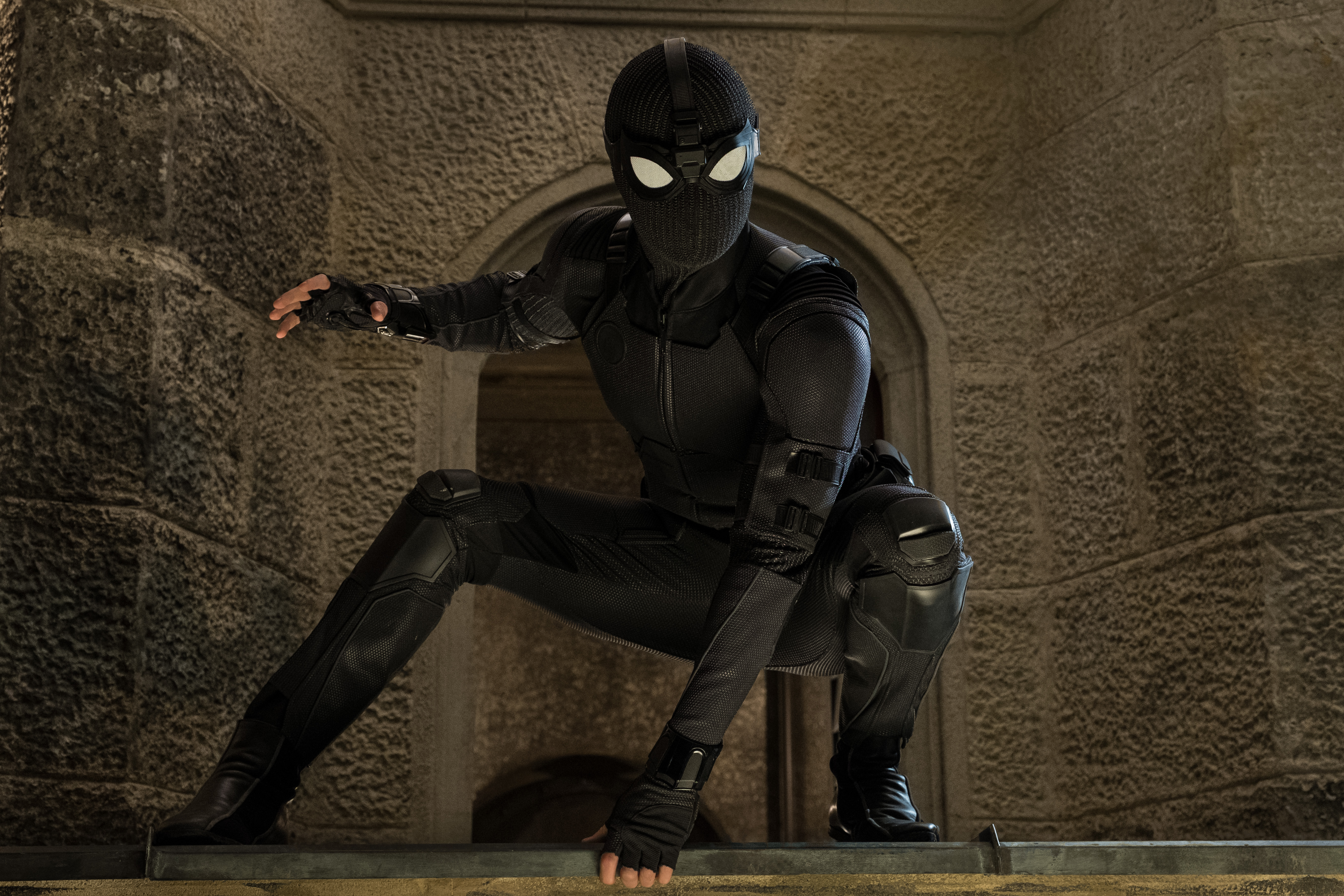
HULLFISH: Leigh? What’s your approach? Do you use selects reels?
FOLSOM-BOYD: I started out trying to be a selects person but I share Dan’s point of view in that if I get excited to dig in, I’ll start looking at dailies and then I’ll start just like cutting it in. I’ll do selects for action beats sometimes, but I think I’m probably more Dan’s school of thought — jumping in.
LEBENTAL: I’ll put markers on things just to know where they were.
HULLFISH: The thing with that school of thought is that you both know that it’s a process, so if you make a decision on day one you’re not locked in so why not dive in?
LEBENTAL: Not only that, but I always say: if you do the perfect cut on day one in the assembly all you’ve done is precluded that cut from existing, because this is a collaborative process that we have to go through, so I have to play a bit of a game with myself to not — as they say — tighten the lug nuts too much during the early cut. I’m very much aware of having done that before and seeing a movie go past its peak. I’ve had that happen to me.
When I have that first cut in good shape, I have to then put it aside because I know that if things go right — when we get towards the end — there’s a certain moment where you wanted to just slam in tight. Leigh’s smiling because she knows we had that moment where they were like, “God this thing’s just not going to get better.” So, we’d say, OK here we go. And then wham! All of a sudden it’s in fighting shape. I have this mind thing of where we should be when, rather than going right in to try to make the perfect scene on day one. I want to make a good scene. I want to make a playable scene but it’s not exactly the most refined or efficient scene that it’s going to ultimately be.
HULLFISH: I love that quote: “Don’t tighten the lug nuts on too tight.” Tell me a little about screenings. Does it change for you to be in a room with multiple people?
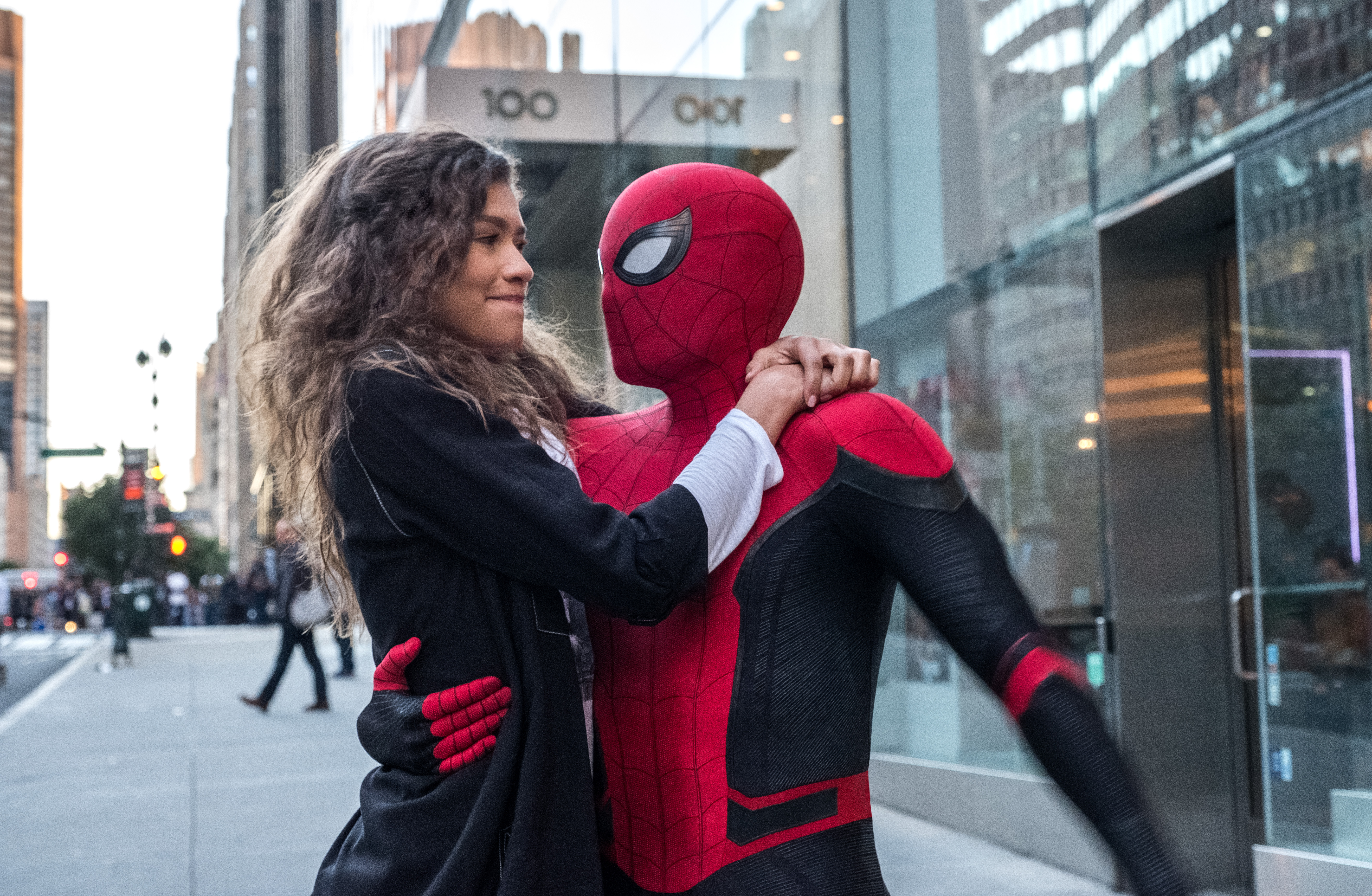
FOLSOM-BOYD: So because we have spoilers in our movie, we had to pull people that had seen Avengers: Endgame for our screenings. So it was a small pool to be able to take from. The first screening that we had went really well, then our subsequent screenings — the number to pull from gets smaller and smaller. And then the executives decided that we couldn’t really have screenings until Avengers Endgame comes out because we need to be able to have a larger pool to take from. People have to know what the spoilers are from that to see our movie.
LEBENTAL: The core issue here is that these movies have to be shown to audiences, and we were hamstrung. So the normal process would be to keep bringing in new fresh audiences to view it, so until Endgame was out we couldn’t really readjust and do the screenings that would help us take it home. Screenings are incredibly important. We record the audiences on those infrared surveillance cameras and you get to know everyone in that little select audience.
HULLFISH: But when you’re sitting in an audience for the first time are you feeling the movie differently? Are you taking notes?
FOLSOM-BOYD: I do. I’m the one that always has a little pad and pen and I’m taking notes. You get a stack of cards so it’s kind of silly for me to sit there and do all the notes, but I’ve done it for years. You sit there on the edge of your seat and as a joke comes up, and, as Dan says, it’s either a clam or it plays. And we would give each other the thumbs up. There was a moment in the third act where when I was cutting I wasn’t sure it was going to be funny and Dan worked with me on it and he said, “Trust me. This is funny.” So the first time that we screened it, it got a laugh and I turned to Dan and I smiled. I said, “OK. You’re right. You’re right all the time.” They’re very informative, but for me personally, I get nervous sitting in the audience because you know early on whether you’ve got the audience with you or if they’re not really loving the movie because there’s just an energy in the room. So when they start laughing early on, you’re thinking, “All right. OK. This might not be so bad.”
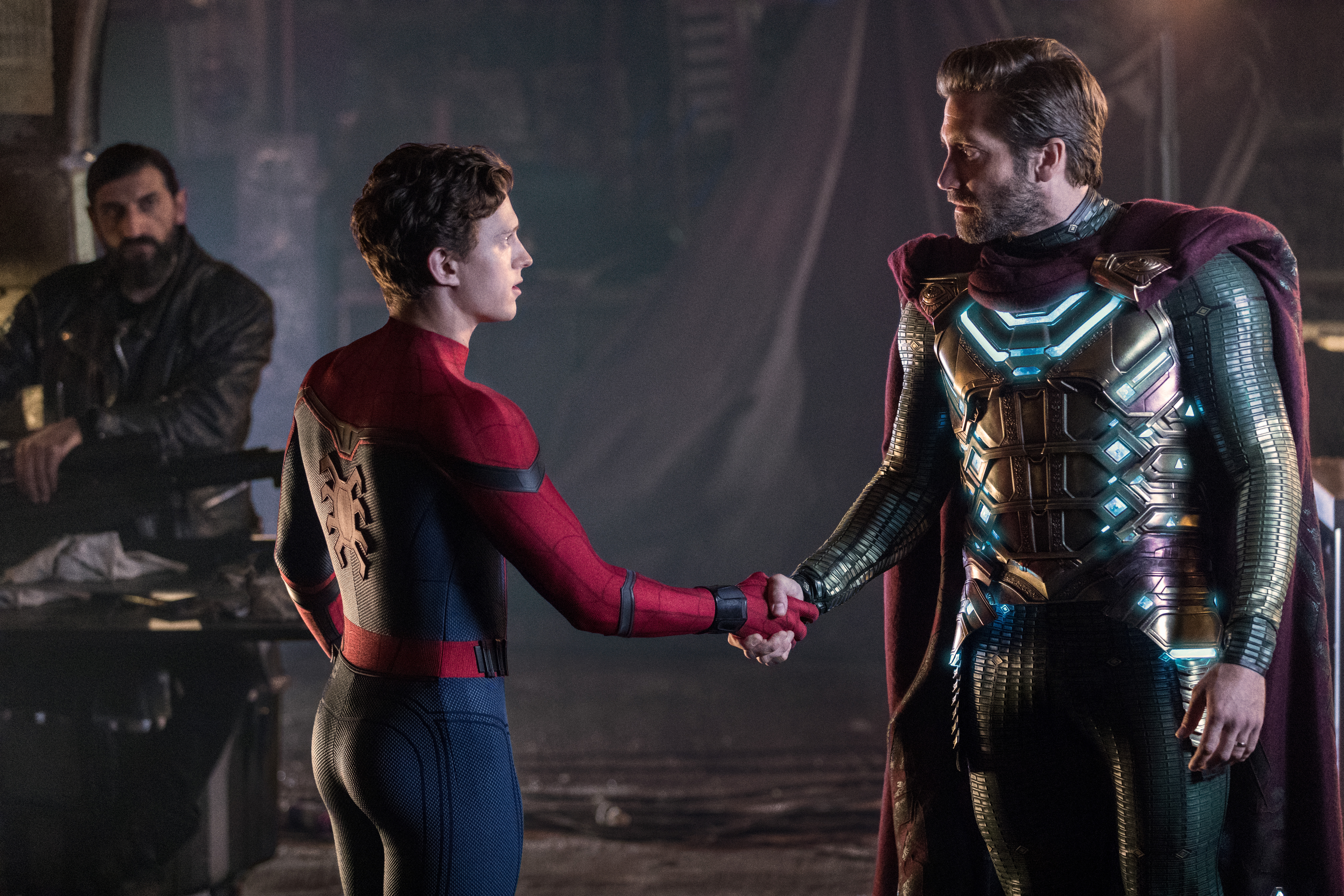
LEBENTAL: Those things are crazy because you hang on a dime and then big decisions are made off this small little group that’s seeing this movie — statistically insignificant. You have to look at it and take it for what it’s worth. Then there’s the other great stuff is to see when the twists hit. Leigh’s right. If you have a screening and they’re not on board right away you know that it’s gonna be a long night.
HULLFISH: When the screenings go bad you also know you’ve got your work cut out for you for the next couple of weeks, right?
LEBENTAL: Oh yeah. It’s strange because these are scored things. And I’ve certainly had it where you think this audience isn’t enjoying it and then the score comes back and it’s higher than the other ones. So you have to kind of go by both of those things: what you felt in the room but you also have to go by what they tell you on the scores. That’s just part of the process. We go down alleys that lead to nothing a lot. As much as we’re always advancing the picture, we’re also sometimes going backward on certain things. That’s why you have to have enough screenings to get to that point where you feel, “yeah that’s it.” Sometimes the focus group does kill you because one person can really change the tone of 20 different people by saying something bothered them and then they all get to think about it and then all of a sudden that’s the takeaway.
HULLFISH: Dan you alluded to the fact that you started cutting on film. Do you remember your first non-linear job?
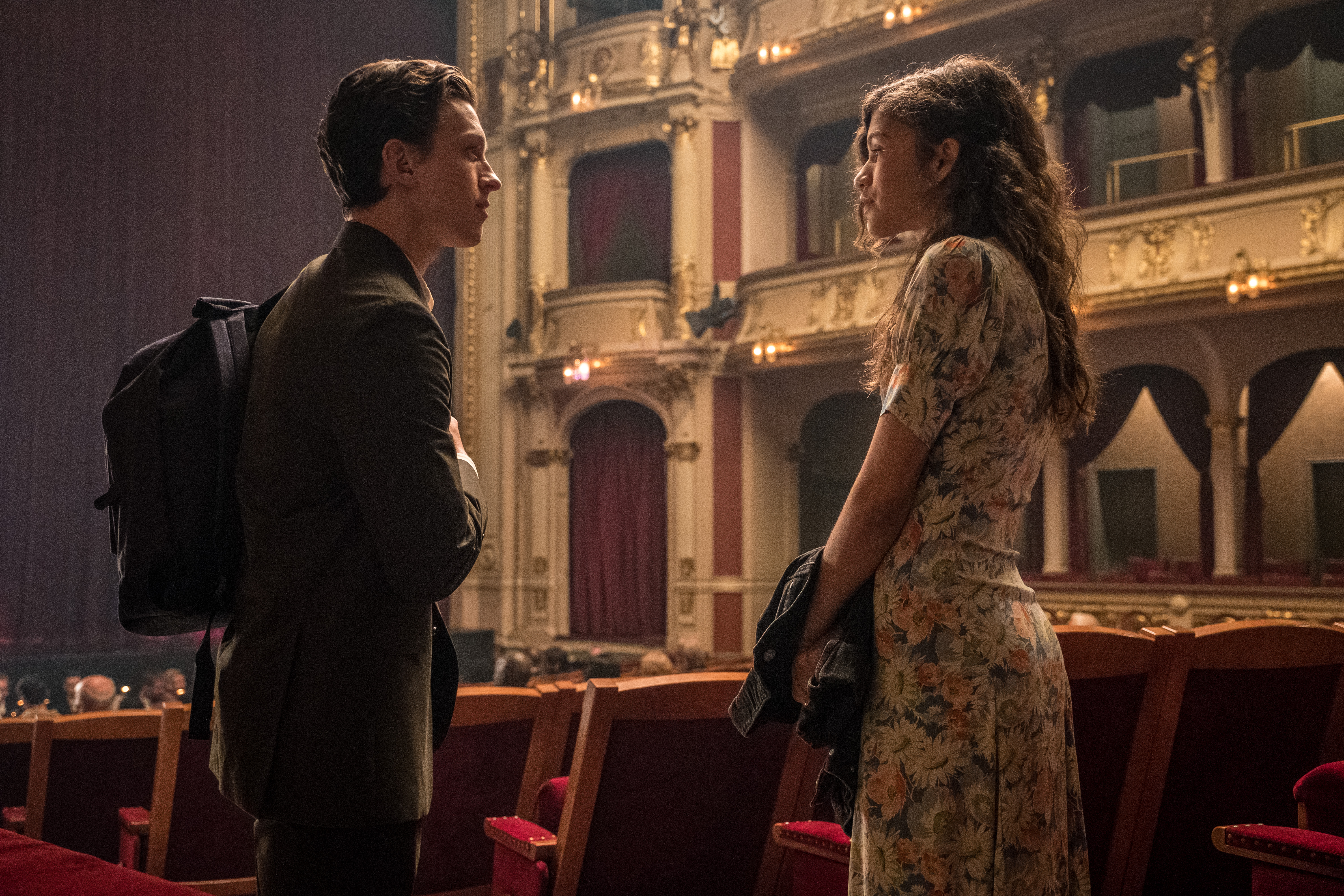 LEBENTAL: Actually the first movie I was the editor on was cut on this rinky-dink State of the art thing big. Back then it was a poor man’s Ediflex. It was this thing that chased a bunch of Betamax. You’d do a preview and then you’d hear like twelve Betamax zip into place so you could play multiple cuts. You got at least 15 seconds of material you can watch here! That’s where science has brought us! What can they do more? But by my second film, I was on an Avid. I bought my first Avid in ’92. But in those days we also had the parallel film route. So even if we’re cutting digital we would have a film room with us and we would be cutting the prints up and getting them ready for screenings. So we would still look at film because the resolution wasn’t very good.
LEBENTAL: Actually the first movie I was the editor on was cut on this rinky-dink State of the art thing big. Back then it was a poor man’s Ediflex. It was this thing that chased a bunch of Betamax. You’d do a preview and then you’d hear like twelve Betamax zip into place so you could play multiple cuts. You got at least 15 seconds of material you can watch here! That’s where science has brought us! What can they do more? But by my second film, I was on an Avid. I bought my first Avid in ’92. But in those days we also had the parallel film route. So even if we’re cutting digital we would have a film room with us and we would be cutting the prints up and getting them ready for screenings. So we would still look at film because the resolution wasn’t very good.
HULLFISH: So 1992… what was the movie?
LEBENTAL: It was a film called Dead Presidents that came out in ’94.
HULLFISH: Leigh, what about you? Have you always been on Avid?
FOLSOM-BOYD: I’ve always been on Avid.
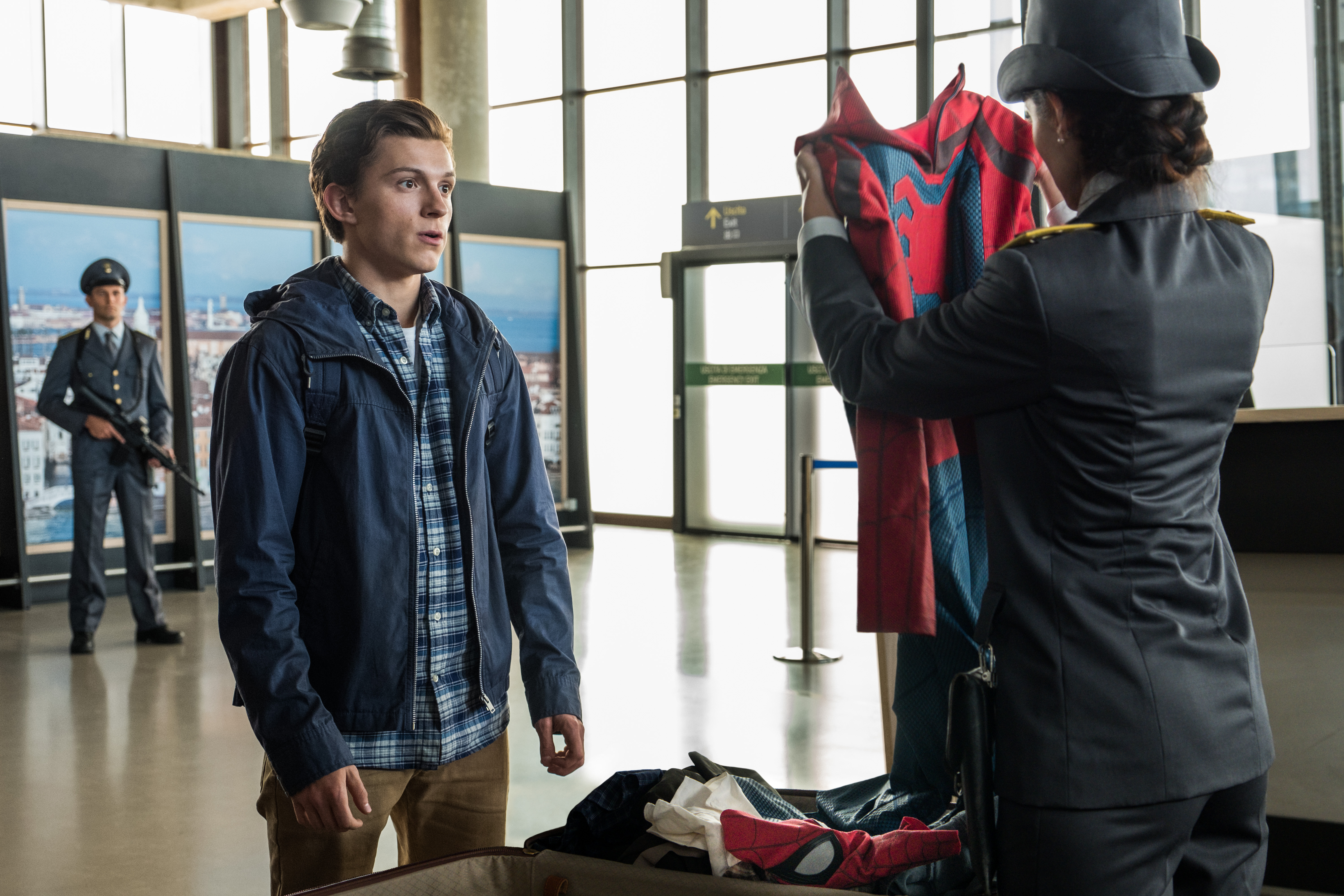
LEBENTAL: Well for me it became my advantage. That’s how I rose so quickly in Hollywood — because I was on the cusp of that.
FOLSOM-BOYD: He doesn’t say anything about how talented he is.
HULLFISH: Thank you so much for your time it’s been really informative and interesting and fun to talk to both of you. Congratulations on the movie and good luck on your next projects.
LEBENTAL: Congrats on your health. I know you went through a lot.
HULLFISH: Yeah I’m feeling great. I really appreciate your thoughts and have a great rest of your day. Thank you so much.
LEBENTAL: Take care.
HULLFISH: Thank you so much for your time.
FOLSOM-BOYD: Bye.
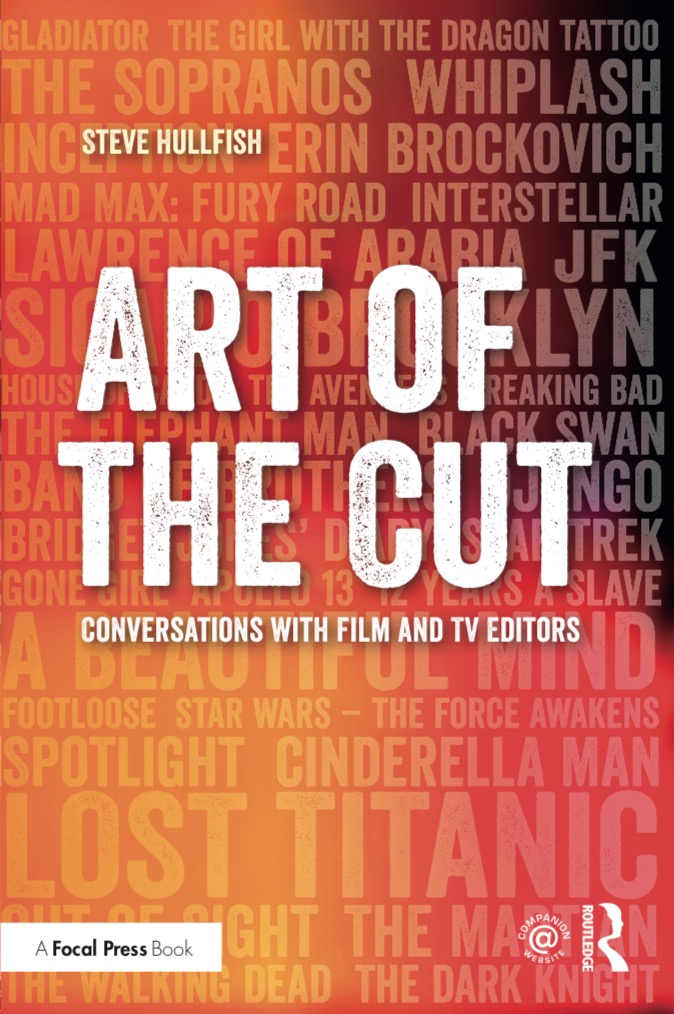
To read more interviews in the Art of the Cut series, check out THIS LINK and follow me on Twitter @stevehullfish
The first 50 interviews in the series provided the material for the book, “Art of the Cut: Conversations with Film and TV Editors.” This is a unique book that breaks down interviews with many of the world’s best editors and organizes it into a virtual roundtable discussion centering on the topics editors care about. It is a powerful tool for experienced and aspiring editors alike. Cinemontage and CinemaEditor magazine both gave it rave reviews. No other book provides the breadth of opinion and experience. Combined, the editors featured in the book have edited for over 1,000 years on many of the most iconic, critically acclaimed and biggest box office hits in the history of cinema.

Filmtools
Filmmakers go-to destination for pre-production, production & post production equipment!
Shop Now









